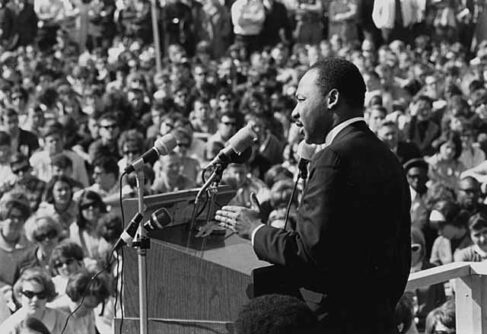Elinor Ostrom’s early career did not hint that she would become a Nobel laureate. She was hired by Indiana University as a tag-along hire: her husband Vincent Ostrom had been hired by Indiana University’s political science department; the department chair offered Elinor Ostrom a job only when he couldn’t get any of the regular faculty members to teach a 7:30 am class.
Elinor Ostrom ultimately became the most famous member of the department because of her work on the so-called “tragedy of the commons.” The problem was given its name by ecologist Garret Hardin from a situation that exemplifies the overuse of a common resource: herdsmen freely grazing cows on a common field with the “tragic” outcome that the overgrazed field no longer supports any livestock.
The problem of the tragedy of the commons became a focus of study in political science in the late 1960s, around the period Elinor Ostrom earned her doctorate at UCLA. Environmental problems such as the overuse of water and forests were interpreted as tragedies of the commons, and many of Elinor Ostrom’s contemporaries thought that these situations could be solved only by government regulation of the use of resources.
Elinor Ostrom thought differently. As she said in an interview:
I want to make a distinction between the tragedy and the problem. . . . [Hardin] was right to identify this as a potential problem; where he was wrong was that the tragedy is [such that local people] can’t ever solve it, they were trapped, solutions had to come from outside.
Elinor Ostrom demonstrated over and over again that communities reliably develop institutions and practices that prevent overuse of resources. There are cases where government action is necessary but, she argued, usually local people recognize the problem and solve it on their own.
Elinor Ostrom was no armchair theorist; like the recently deceased James Q. Wilson, Elinor Ostrom was unusual among political scientists for being an empiricist who insisted on getting data from the field to support her theoretical claims. She traveled the world to study how people solved the problem of how to manage a common resource without government intervention: how Maine lobstermen figured out how to limit traps and agree not to harvest egg-bearing females to revive depleted lobster stocks; how the nonprofit Wisconsin Association of Lakes figured out how to get local lake-users to manage lake environments; how Africans limit the use of pastures; how Nepalese villagers and farmers agree on how much water may be drawn from common irrigation systems.
Summarizing the themes of her work, Elinor Ostrom said in another interview last month:
I am a believer of the capabilities of people to organize at a local level. That does not mean that they always do. There are a wide variety of collective action problems that exist at a small scale. The important thing is that people at a small scale, who know what the details of the problems are, organize, rather than calling on officials at a much larger scale.
Officials at a larger scale may have many collective-action problems of their own that they need to address. They do not have the detailed information about problems at a small scale that people who are confronting those every day do have. Thus, the solutions that are evolved by local people have a chance of being more imaginative and better ways of solving these problems than allowing them to go unsolved and eventually asking a much larger scale unit to solve it for them.
Elinor Ostrom’s most important book, Governing the Commons: The Evolution of Institutions for Collective Action, remains in print more than two decades after its publication. It does much to explain why what philanthropists already sense -- that small groups acting on local problems often come up with the best solutions to community problems.





